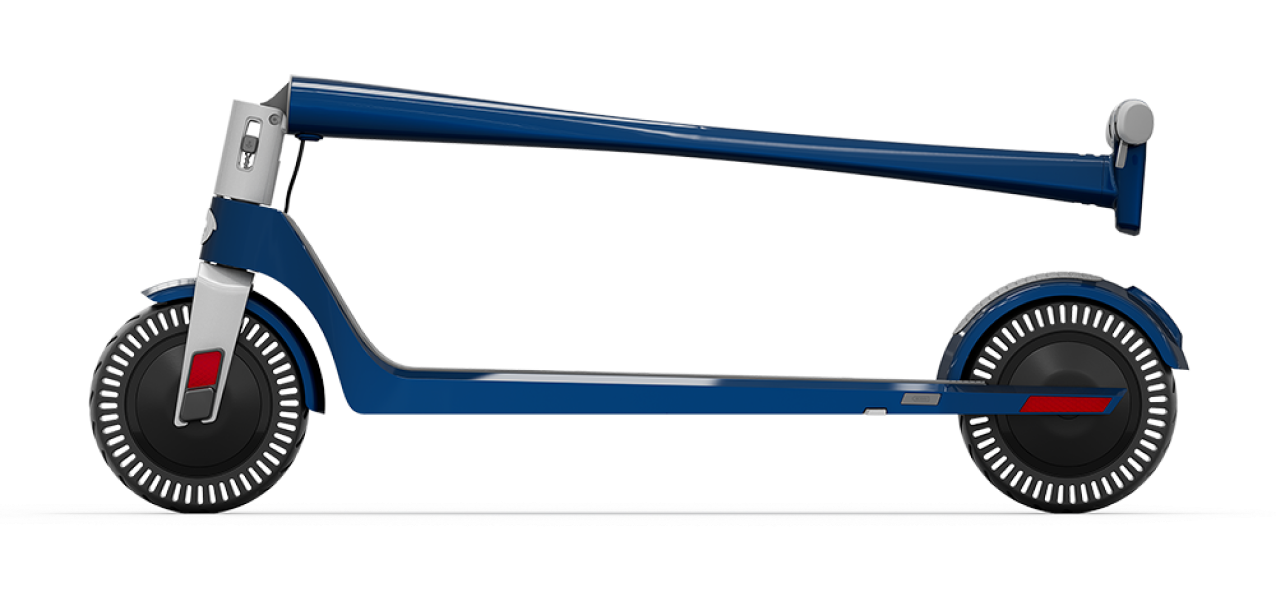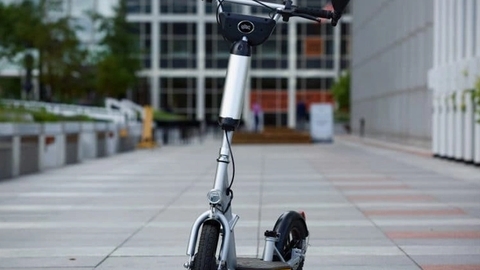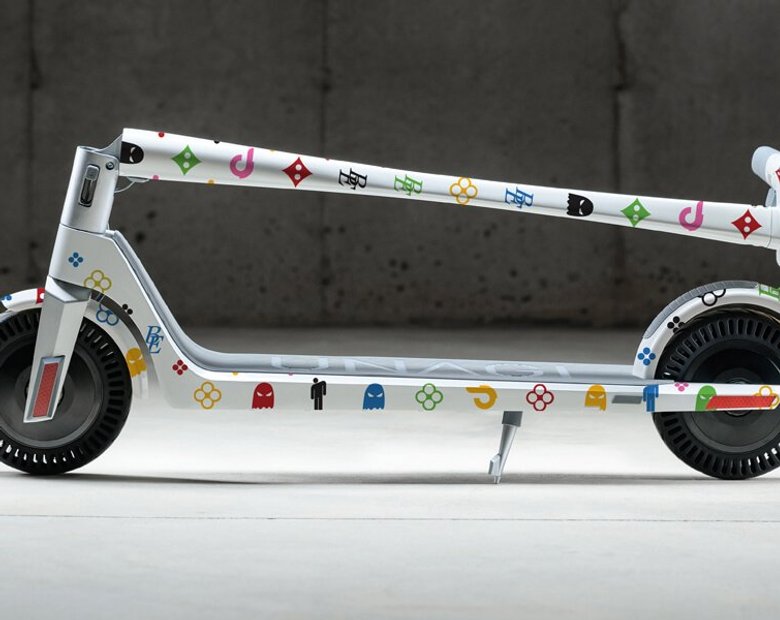With White Glove Love, we go where you go. All-Access members who are traveling can get an Unagi electric scooter for use during their trip, delivered to their hotel or Airbnb, at no extra charge. Now available in 8 U.S. cities.
Years ago when scooters were for kids, they featured slower, less powerful batteries. But today, as one of the fastest-growing last-mile commute options, electric scooters aren't a child's toy any longer.
Modern e-scooters require a far more powerful battery, one that is capable of taking you wherever you need to go. But electric scooter batteries are not created equal. They all differ in capacity, size, and output.
The type of battery your electric scooter has determines its reliability and performance. It is responsible for powering the motor, the lights, the controller, the display. It even dictates the speed and range.
So how do you know which one you need?
In this comprehensive guide to electric scooter batteries, we'll teach you everything you need to know about e-scooter batteries, including the different types of batteries available, their specifications, and how to maintain their efficiency.
If you are ready, then let’s dive in!

What are the Different Types of Batteries Used on Electric Scooters?
Essentially, electric scooter batteries are made up of several miniature powerhouses known as battery cells. These cells are packed together to form one larger battery with immense capacity, output, and voltage.
Manufacturers like to refer to the different types of electric scooters by their acronyms. There are three most common types of electric scooter batteries, including;
- Lithium-ion Batteries (Li-ion)
- Sealed Lead-Acid Batteries
- Nickel Metal Hydride Batteries (NiMH)
Lithium-ion Batteries (Li-ion)
Lithium-ion batteries have taken the electric scooter market by storm - they’re now the most commonly used type of battery in modern scooter manufacturing.
There are multiple battery chemistries within the Li-ion category; all boast high energy density, meaning they store more energy per physical weight. They also weigh less than all the other batteries, last longer, and require less maintenance.
- Some of the battery chemistries you’ll find in the Lithium-ion category include:
- Lithium manganese nickel (LiNiMnCoO2); commonly known as INR, NMC
- Lithium manganese oxide (LiMn2O4); widely known as IMR, LMO, Li-manganese
- Lithium nickel cobalt aluminum oxide (LiNiCoAlO2); widely known as NCA, Li-aluminum
- Lithium nickel cobalt oxide (LiCoO2); widely known as NCO
- Lithium iron phosphate (LiFePO4); widely known as IFR, LFP, Li-phosphate
- Lithium cobalt oxide (LiCoO2); widely known as ICR, LCO, Li-cobalt
- Lithium Polymer (LiPo)
These different lithium-ion batteries represent a trade-off between durability, output, and capacity. Most of these batteries are used in phones, cameras, laptops, and tablets.
E-scooters have utilized only a handful of these chemistries. The most common Lithium-ion batteries in electric scooters include:
Lithium-Manganese (INR, NMC)
Considered one of the safest chemistries, the INR battery features high storage capacity and current output. The manganese in the battery lowers internal resistance, allowing for current production while maintaining optimal temperatures. This helps to prevent thermal runaway and explosion even under high current output.
Lithium FerroPhosphate (LFP)
Although they are expensive, LFP batteries are long-lasting and significantly safer. They are suitable for devices that need high load currents and endurance, like electric scooters.
Lithium Polymer (LiPo)
This type of lithium-ion battery assumes a pouch format instead of the typical cell format found in most e-scooter batteries. Their small and flat shape makes them highly suited for portable electronic gadgets, including e-scooters.
Advantages of Li-ion Batteries
- Their high density allows them to store more energy and deliver longer ranges
- Slower discharge rate
- Requires less maintenance
- Boasts higher voltage than other e-scooter batteries
- They don’t lose efficiency after partial charges
- You don’t have to prime the battery for it to function
- They're lighter than all the other types of batteries
Disadvantages of Lithium-ion Batteries
- They lose their potency after 500-1000 charges
- They shouldn’t be stored when fully discharged as this accelerates their spoilage
- They overheat easily and can even explode
- They are relatively expensive
Sealed Lead Acid Batteries
Lead-acid batteries are the oldest and the cheapest type of batteries. They’re commonly found in large motor vehicles, trucks, and electric machines, such as golf carts.
Since they were the first type of battery to be invented, lead-acid batteries were also the first to be used in kids’ toys and other electronic gadgets. However, they became more of an inconvenience than a power source due to their bulkiness.
Regardless, these batteries are known to produce a high immediate current and store a lot of power. Which is why you’ll still find them in some bulky electric scooters and heavy cars. The downside however is that their longevity depends on the temperature of their surrounds as well as their size and quality.
Advantages of Sealed Lead Acid Batteries
- Relatively affordable compared to other batteries
- Large current capability
- Tolerant to overcharging
- They can take a lot of abuse
- They come in various sizes
Disadvantages of Sealed Lead Acid Batteries
- They are heavier than all the other types of batteries
- Low energy density, meaning they weigh too much when compared to the amount of energy they store
- They require a lot of time to recharge
Nickel Metal Hydride Battery (NiMH)
Popularly known as NiMH, nickel-metal hydride batteries are somewhere between the Lithium-ion battery and the sealed lead-acid batteries. They are the most common batteries found in rechargeable electronics.
Like the lithium-ion batteries, the NiMH batteries have a high energy density and can thus store a lot of energy per unit weight. They also have fewer materials which makes them safer than lithium-ion batteries.
Unfortunately, these batteries require more time to charge, and fast charging can easily damage them. Additionally, they are only ideal at specific temperatures as their voltage output plummets when exposed to hot or cold conditions.
Advantages of Nickel Metal Hydride Batteries
- Have a high energy density and store more energy in a unit of weight
- Lighter than sealed lead-acid batteries
- Safer than lithium-ion batteries
- They don’t explode when overheated
Disadvantages of Nickel Metal Hydride Batteries
- Charging these batteries takes longer (10-12 hours)
- Have a low voltage output
- Not suited for areas with temperature fluctuations, especially extremely cold areas
- More expensive and heavier than lithium-ion batteries.

Electric Scooter Battery Specifications
Now that we have explore the various types of electric scooter batteries, let’s switch gears and delve into e-scooter battery specifications.
When it comes to battery specs, the following three measurements are what you should focus on:
- Voltage – Measured in Volts (V)
- Charge Capacity - Measured in Ampere-hours (Ah)
- Energy storage capacity – Measured in Watt-hours ( Wh)
These aspects determine your electric scooter’s power, longevity, and efficiency. The concepts can be a little complicated, so we've broken them down to make them easier to understand.
Voltage
Voltage is the “push’ that makes electrons move, creating an electric current.
In electric scooters, voltage forces electrons to move from the charger to the battery and then to the motor. It’s a measure of how fast power can be released. The higher the voltage, the more power it will deliver to the motor.
All batteries and other components that use electricity come with input and output voltage. A good rule of thumb is that the battery’s output should be greater than a motor’s input voltage for optimal performance.
You can easily calculate a battery’s voltage if you have its charge capacity and storage capacity. You will need to divide the storage capacity measured in Watt-hours (Wh) with the charge capacity measured in Amp-hours (Ah)
1V = 1 Wh / 1 Ah
The majority of scooters come with voltages ranging from 20V, 24V, 36V, 48V, and 52V. But they can go as high as 100V or even 120V.
E-scooter Battery Charge
The metric for measuring battery charge is Ampere-hours (Ah).
Batteries either have a positive or negative charge.
Any matter comprises several atoms, which, in turn, comprise neutrons, protons, and electrons. An atom may have a fixed number of electrons or have more or less than that number. When an atom boasts more electrons than usual, it’s said to have a negative charge. Conversely, if the same atom has fewer electrons, it’s said to have a positive charge.
Essentially, batteries have components that allow the free flow of electrons. A battery’s ability to accept the electrons that provide electricity is called a battery charge.
Most scooters have batteries with a battery charge capacity ranging from 2 Ah to 50 Ah. The higher the battery charge in an electric scooter, the higher the performance.
You can calculate the battery’s charge by dividing its storage capacity measured in Watt-hour (Wh) with the voltage measured in Volts (V).
1 Ah = 1WH/1V
E-scooter Battery Capacity
Often, electric scooter manufacturers don’t indicate the battery storage capacity - i.e. how much energy a battery can store. The metric for measuring energy storage capacity is Watt-hours (Wh). But this is quite a useful bit of information to be aware of.
A battery with a 1 Wh rating has stored enough energy to deliver one watt of power for an hour. The more the battery capacity, the longer the scooter range.
Average adult scooters have capacities of 150 Wh to 624 Wh. However, the electric scooter battery capacities can range from a hundred Watt-hours to almost three thousand Watt-hours.
You can determine the battery capacity by multiplying the charge and the voltage.
1 Wh = 1 Ah x 1V

Other Things to Consider in Electric Scooter Batteries
Apart from the battery measurements, below are a few other bits you might want to know about your scooter’s battery:
- Battery Packs
- Voltage Sag
- Battery Management System
- C-rate
- Battery Brands
Battery Packs
Manufacturers create a battery pack by assembling hundreds or thousands of 18650 Li-ion cells. The cells are connected either in series to account for the total voltage. By arranging these battery cells in a series makes it possible to have 24V, 36V, 48V, 53V, and 60V battery packs.
To increase output current, manufacturers connect cells in parallel. Changing the battery configuration will increase the output voltage, amp-hour capacity, and max current.
Voltage Sag
It’s a common phenomenon for an electric scooter battery to experience a voltage sag. This is a short duration of reduction in voltage caused by overload, short circuit, and electrical resistance.
For example, when a rider is on the scooter, the load is transferred to the battery, and there’s a rapid voltage drop.
If you’re reading the battery capacity with the load on, you’ll think that your battery has lost 10% of its capacity. However, the battery voltage returns to normal once you get off the scooter.
Voltage sag is often experienced during long rides when there’s an extended discharge period. The lithium chemistry in the battery takes time to cope with the discharge rate, leading to a drop in voltage, especially at the end of a long ride.
So don’t worry if you detect a rapid voltage drop. If you allow your electric scooter to rest for a few minutes, it will regain its original voltage level.
Battery Management System
Although lithium-ion batteries have many benefits, one of their downsides is that their technology can cause an explosion if mishandled or misused.
For this reason, their cells are arranged in a brick-like battery pack that’s monitored and regulated by a cutting-edge electric circuit known as the Battery Management System (BMS).
Most lithium-ion batteries operate within a range of 2.5 to 4.0V. Any overcharge or undercharge can trigger thermal runaway conditions, with the resulting reactions potentially damaging the battery and reducing its durability. In extreme cases, it can lead to overheating and explosion.
The electronic BMS system monitors the battery, ensuring that it doesn’t discharge or overcharge. The BMS cuts the power when it detects that the battery will discharge fully.
Additionally, modern electric scooters boast batteries with advanced management systems that detect a surge in temperature and trigger a cutoff before batteries start to overheat.
C-rate
Another term that you might encounter when it comes to your e-scooter battery charging is C-rate. It’s a representation of how fast the battery is being fully discharged or charged.
For instance, if your scooter has a C-rate of 1C, this means the battery is charged in one hour. If you charge a 100Ah battery with a 100A current, it will be full in one hour, and its C-rate will be 1C.
Battery Brands
The one final element of the battery that can affect the performance of your electric scooter is the brand that manufactured the battery.
Some brands simply produce better batteries than others, among them are Samsung, LG, Panasonic, and Dynavolt.
Most low-budget and low-power adult scooters come with generic batteries manufactured in China and Middle-Eastern countries. Although these batteries will allow you to take your regular commutes, they won't deliver the quality performance you'll find from using the branded batteries.
How Long Do Electric Scooters Batteries Last?
Since Lithium-ion batteries are the most commonly used type of batteries in electric scooters, we will focus on these.
So, how can you estimate their lifespan?
A Li-ion battery is designed to handle between 300 and 500 cycles before it starts diminishing its capability. This is around 3000 to 10,000 miles for an average e-scooter. This means that they’ll last for one to three years.
However, this doesn’t mean that the battery will lose all its potency abruptly when it hits these figures. It only starts depreciating in performance and gets worse as time goes by. As we mentioned earlier, today’s electric scooters come with advanced battery management systems that help prolong their longevity.

How To Extend Your Electric Scooter’s Battery Life
Electric scooters require little or no maintenance and make the best vehicles for inner-city commutes and short errands.
However, like any other motorized machine you need to appropriately use and charge yours according to the manufacturer’s instructions. Failure to adhere to these good habits can lead to problems that may shorten your battery’s longevity.
The following are simple tips to keep your battery performing optimally for an extended period:
Avoid draining your electric scooter completely
Just like with your phone and other rechargeable electric devices, you shouldn’t wait for your scooter battery to fully drain its power for you to charge it up again. If possible, connect your e-scooter to the charger at every opportunity you get.
Ensure that its power never goes below 10%; if you can fully charge your battery after or before a ride, the better.
Don’t leave your scooter charging overnight
You should never leave your scooter charging overnight. Immediately it’s fully charged, disconnect it from the charging cable. Ensure that you’re aware of your scooter’s charging hours and the number of times you’re supposed to charge it.
Letting your e-scooter stay connected to power even after it’s fully charged can cause thermal runaway reactions, which ultimately damage its battery or, in worst cases, causes an explosion.
If you discover that your scooter battery needs more time to charge than specified by the manufacturer, the chances are that it’s defective, and a replacement is inevitable.
Fully charge your scooter if storing it for long
If you’re planning to take a break from your scooter rides, ensure that its battery is fully charged before storing it. Since Li-ion batteries are prone to discharge when kept without use, it’s best to charge it to at least 40% to ensure that it doesn’t lose all the charge when in the store.
Additionally, check the battery regularly and connect it to the charger every 30 days. Charging your scooter’s battery regularly, even when in storage, helps to keep it in tip-top shape and increases its durability.
Learn about your e-scooter’s battery capacity and range
Knowing your scooter’s specifications, such as voltage, energy capacity, and range, can help you plan your trips accordingly. This ensures that your battery doesn’t run low when you’re still cruising in the city or charge it beyond its recommended capacity.
Most manufacturers will have the battery specifications listed in the user manual, so be sure to check it out.
With this information, you can adopt good riding habits, such as cruising at low speed or giving your scooter some cooling time before taking another ride, to extend the battery’s life.
Use the correct charger for your electric scooter
We recommend you only use the manufacturer’s chargers to juice up your electric scooter’s battery. While there may be other more affordable charging cables in the market, they might end up destroying more than your scooter’s battery.
For example, they could undercharge or overcharge your motorized machine, causing irreversible damages.
If the original cable in the box is damaged, contact the manufacturer for a replacement charger and charging cables. Buying a manufacturer-approved charger will undoubtedly cost less than a replacement battery.
Give your scooter time to cool before you plug it into the charger
While it's good practice to keep your e-scooter charged at all times, this doesn’t mean that you should plug it into electricity immediately when you touch down after a long ride.
When you ride your electric scooter, it generates a lot of heat, making most of its components, including the battery, hot.
In the same vein, a scooter also produces heat when charging. If you don’t give your scooter time to cool after a riding expedition, the heat generated when charging can become unbearable leading to the explosion of battery cells.
Let your scooter dissipate the heat generated from riding for at least 30 minutes, and then plug it in power.
Store your e-scooter in the right climatic conditions
As we said, batteries don’t respond well to extreme temperatures. Just like how the car fails to start, or a phone goes dead during the winter season, too much heat or cold can affect the Li-ion battery chemistries and affect its charging capability or its ability to hold a charge for a long time.
When electric scooter batteries are exposed to extreme conditions for extended durations, they start to lose their potency, and their lifespans are shortened.
Try not to expose your scooter batteries to temperatures below freezing point or anything above 114 degrees Fahrenheit. And store your e-scooter in a cool and dry place.
Are Electric Scooter Batteries Waterproof?

Although some electric scooters come with a water resistance (IP) rating, this doesn’t mean that they are fully waterproof. What that means is they can resist water splashes to some degree.
Despite having an IP rating, manufacturers still warn riders against riding in the rain or cascading through puddles because water-resistant doesn’t necessarily mean waterproof.
However, since electric batteries are sensitive to water, some manufacturers offer extra protection by having a separate IP rating for the battery casing.
But, unless there’s a specific rating for a battery casing, the official water-resistance rating for the electric scooter rating will apply to the battery.
If you're unsure about how waterproof your e-scooter is, err on the side of caution and assume your battery isn't protected against water, unless your scooter specifically says otherwise.
Can You Carry an Extra Battery for Your Scooter?
Usually, it’s possible to boost your e-scooter performance by adding an extra battery. Some scooters even come with a reinforced frame with extra space for a spare battery.
Adding an extra battery increases the battery’s output voltage, resulting in improved performance in speed and range. However, it’s important to note that while it’s possible to add an extra battery, the total voltage output of the battery should not exceed the motor’s input voltage.
What Does the Future of Electric Scooter Batteries Look Like?
We’ve seen significant improvements from the original bulky e-scooters batteries that offered toy-like ranges to today’s super-light Li-ion batteries that last longer and provide high energy density.
So what does the future look like for electric scooter batteries? While it’s not entirely possible to predict what the future of electric scooters holds, what we can be sure of is that the quality of batteries will only get better.
Which battery is best for electric scooter?
When it comes to picking the best battery for your electric scooter, it's not just about what's good on paper. It's about matching your lifestyle, your needs, and yes, even your aspirations for what you want your electric scooter to achieve:
- Range and usage: If you want a battery for long-range and high performance, Lithium-ion batteries, particularly Lithium Manganese (INR, NMC), are your go-to, due to their high energy density and lighter weight, meaning more power and longer rides without adding unnecessary weight. The INR, NMC variant, with its blend of nickel, manganese, and cobalt, offers an excellent balance of energy capacity, safety, and longevity, making it a top choice for riders prioritizing range and reliability.
- On a budget?: If affordability is key, Sealed Lead-Acid batteries might be your best bet. They're heavier and have longer charging times, but for moderate use, they provide a cost-effective solution without compromising too much on performance.
- Environmental conditions: For those living in extreme climates, battery choice can significantly impact performance. Lithium Iron Phosphate (LFP) batteries, another Li-ion subtype, are known for their thermal stability, making them ideal for hot or cold environments. They offer safety and durability where temperature fluctuations are a concern.
Emerging battery technologies
Looking ahead, the future of electric scooter batteries lies in the development of new materials and technologies that offer improved performance, safety, and environmental sustainability:
- Solid-state batteries: These batteries promise higher energy density, improved safety, and longer life spans by replacing the liquid electrolyte with a solid. While still in the development phase, solid-state batteries could revolutionize electric scooters by offering faster charging times and longer ranges.
- Advancements in Li-ion Technology: The Li-ion family continues to evolve, with Lithium-Silicon and other innovations aiming to boost energy density and reduce fire risks. These advancements could further refine the performance and safety of electric scooters.
- Sustainability focus: With an increasing focus on sustainability, research is also directed towards more environmentally friendly battery materials and recycling technologies to reduce the ecological footprint of battery production and disposal.
Choose the battery that best suits you
While Lithium-ion batteries, especially the Lithium Manganese (INR, NMC) type, currently offer a superior blend of efficiency, weight, and longevity, the ultimate choice of battery should be dictated by your specific needs, budget, and usage patterns.
But, as technology marches forward, emerging battery technologies promise to enhance your electric scooter experience further. Whether it's through improved energy density, faster charging, or eco-friendlier options, the future of electric scooter batteries looks bright and full of potential.

Read more.

Read more.

Read more.

Read more.

Read more.

Read more.

Read more.

Read more.

Read more.

“Is my scooter legal?” is a question many are increasingly asking. The micromobility industry is one of the fastest-growing and most exciting in the world—with promises for...in addition to abundances of the basics of time and money savings. And with this pace of innovation comes a struggle for regulation to keep up.
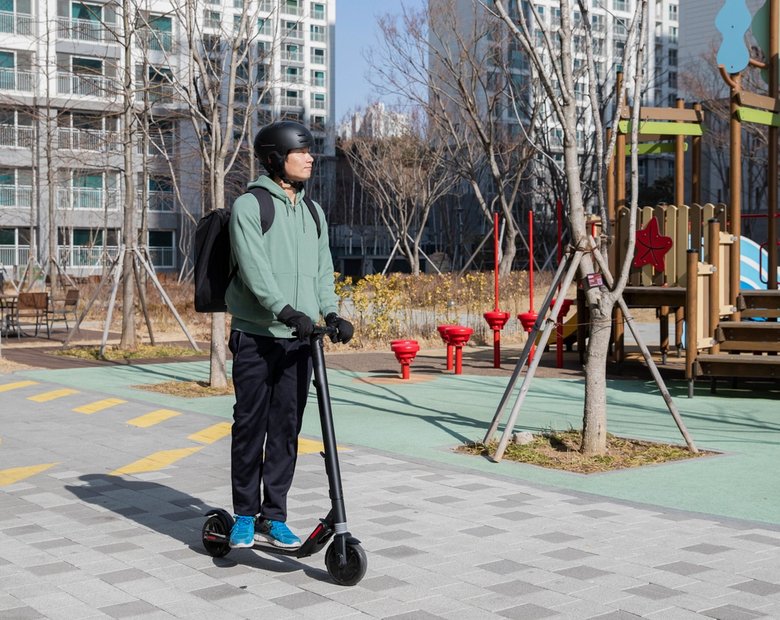
So, you're thinking about joining the electric scooter revolution, huh? You've seen those sleek and stylish scooters zipping around town, effortlessly gliding through traffic, and you can't help but wonder: Are electric scooters easy to ride?
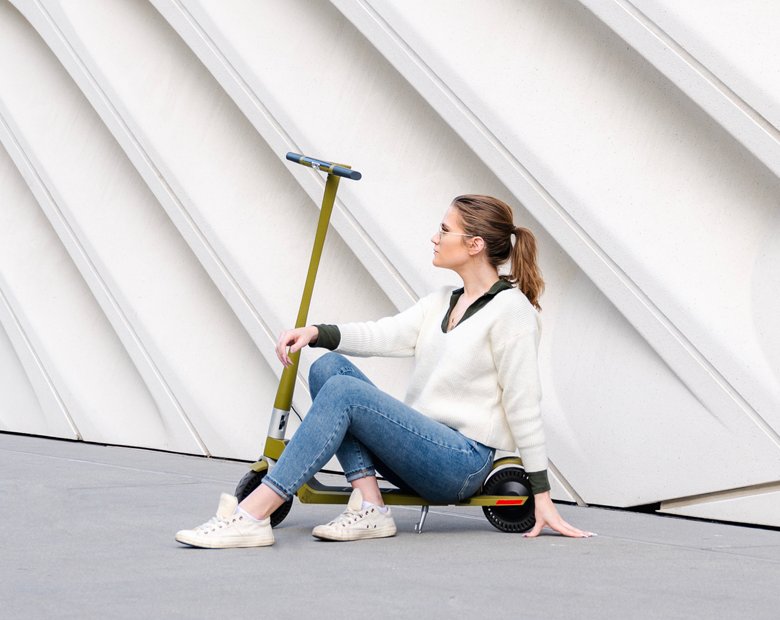
In this guide, we'll break down what defines a lightweight electric scooter, why you should choose one, and the top features you should look for.
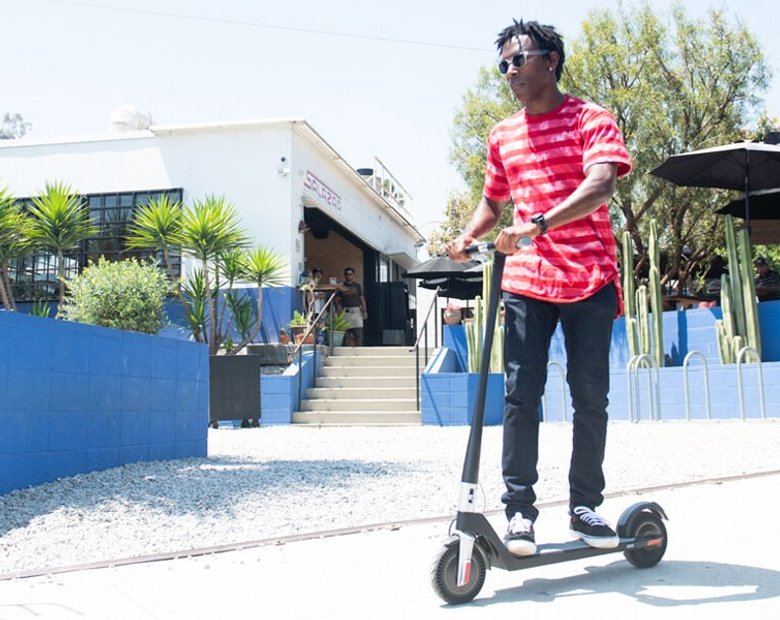
Want to get the most out of your electric scooter battery and extend your riding adventures? We've got you covered with our comprehensive guide full of maintenance tips and best practices.

*Disclaimer: Unagi, INC. has used best efforts, but does not in any manner guarantee the accuracy of the below findings regarding electric scooter laws in the United States or internationally. Electric scooter riders or those considering to purchase or begin…

It’s beyond question that we must drastically reduce carbon emissions in the coming years to head off the worst effects of climate change. How we do that has been a matter of considerably drawn-out debate. As individuals, it can be…

If you're considering riding an electric scooter for the daily urban commute - or even just for recreation - this article will give you the lowdown on getting insurance for an electric scooter.

In many regions, there's a clear restriction against riding electric scooters on the road, with the rules steering their use towards designated areas such as bicycle lanes, multi-use paths, and shared street paths.
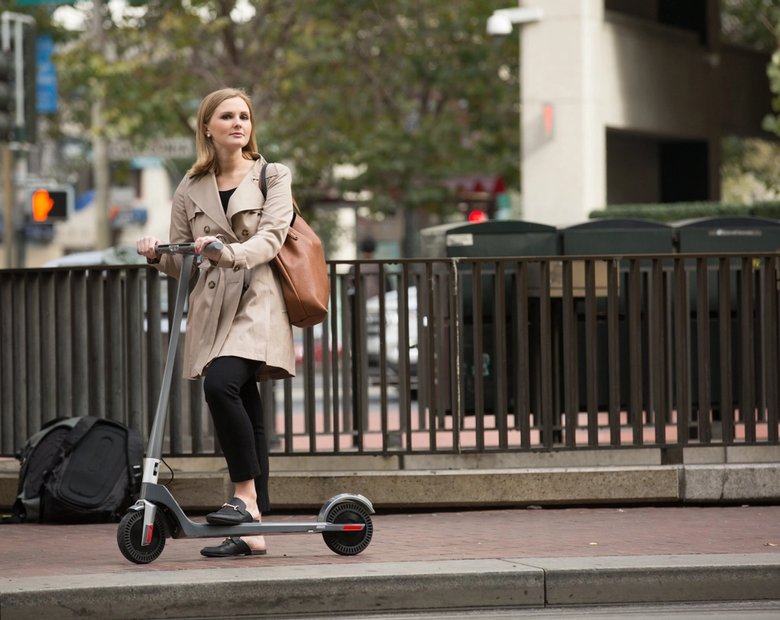
You’ve seen them all over your city’s streets, and everyone who rides one looks absolutely thrilled. So, why haven’t you picked up your own folding electric scooter yet? Maybe you’re worried about whether e-scooters require a driver’s license, or a…

The basis and the premise of my work is that we either operate out of love or we operate out of fear...Time is currency. The coolest thing about the scooters is that it's really quick, and it goes uphill. From there, traveling more efficiently and having a good time doing it--I think that's the most important thing.

Cynthia Leu has a full plate. A tech worker by day, Cynthia spends her off time balancing the parallel lives of a powerlifter, entrepreneur, mental health advocate, and more. Riding Unagi helps this USMC veteran cut down on everyday…

https://www.youtube.com/watch?v=7m2hVBE62LY Rasheed Muhammad is sick of Los Angeles traffic. In order to preserve his sanity, Rasheed has traded his everyday driving habit for the portable and beautiful Unagi Model One. It’s an essential accessory for navigating LA streets -- and…

Rich Lee, Co-Founder of San Francisco’s SPRO Coffee Lab, wants to share his love for coffee with the world. He depends on riding Unagi to avoid the hassle of navigating the parking crunch in the booming Mission Bay neighborhood.…


